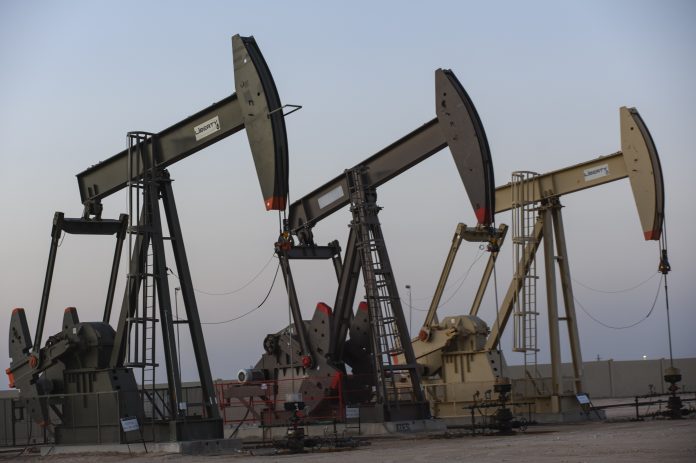Any way you look at it, the energy industry’s upstream sector has been woefully under-invested for the past seven or eight years and the problem looks to get worse and severely handicap the industry’s ability to meet national and global needs between now and 2050.
That’s the conclusion of industry analysts who say the situation is much more dire than has been generally recognized.
“Last year JP Morgan identified a $600-billion shortfall of upstream investment that will be needed by 2030 to meet what the bank called a muted view of global oil demand,” said Texas Independent Producers & Royalty Owners President Ed Longanecker.
“According to (analytics company) Wood Mackenzie, even under an accelerated energy transition scenario to reach a two-degree Celsius (global warming limit) pathway, $7.5 trillion of upstream investment will still be needed by 2050 to meet energy demand.”
Longanecker said West Texas’ financially stable independents are still driving production in the Permian Basin, but that could taper off next year as exploration and production companies “grapple with a variety of challenges including workforce shortages, the rising cost of goods and services and a hostile federal policy environment.
“Texas producers remain the most resilient and innovative in the world and they will do all they can, but it’s critical that policymakers stop politicizing our energy security and develop a coherent strategy to support long-term investments in energy infrastructure and domestic production,” he said Wednesday from Austin.
“At the 2021 Financial Times Commodities Global Summit, Trafigura’s co-head of oil trading, Ben Luckock, said the under-investment is real and that in the last seven years two-thirds of the E&P budget of the world has been lost. And in September JP Morgan’s chief executive officer, Jamie Dimon, said divesting from oil and gas would pave the road to hell for America.” Trafigura is a global commodities trading and logistics firm. The upstream is the E&P that goes on in the Basin while the midstream is the pipelines and the downstream the refineries.
Permian Basin Petroleum Association Executive Director Stephen Robertson reported Thursday that a December 2021 report by the International Energy Forum and IHS Markit said the global under-investment was 30 percent lower than in 2020 and 23 percent lower than in 2021 despite the global demand having rebounded to near 2019 levels.
“This accounted for $115 billion less in global oil and gas sector funding in 2021 alone compared to 2019,” Robertson said. “The reasons are many and varied, but they have one common theme: instability.
“The reasons are price volatility, proposed and actual changes in government regulations, inconsistent long-term demand predictions, the war in Ukraine, inflation and inconsistencies or lack of standardization in environmental, social and governance criteria, all of which are driving up capital costs and diminishing interest in investment for long-cycle resource development.”
Robertson said the under-investments impact everything that goes into drilling and completing a well, simple and complex equipment, machinery, employees, training and raw materials.
“It’s highly likely that a lack of investment in the development of oil and gas assets will lead to the use of higher-polluting energy sources around the world such as wood and coal, which is very counter to the purported environmental desire of those working toward the end of our industry,” he said.
“The solution is a stable regulatory environment coupled with a national acknowledgement that oil and gas resources are vital for energy security. This would encourage and support increased investment in oil and natural gas long-cycle projects even with the other volatility that still remains in the world. “While changes now would impact capital investment and field operations, they would not have an instantaneous impact on production. Any increase in investment over the next two years would likely be recognized in increased production within the next five to six years.”
Waco economist Ray Perryman reported “a definite desire for more capital for upstream development of late.
“Production has reached record levels for both oil and gas,” Perryman said. “On the other hand, if you ask those who are wanting to develop more acreage they will obviously want more capital.
“The idea of under-investment to some people implies investments that should have happened but didn’t. In reality, what’s going on in the Permian Basin is the amount of investment that the market will presently support.
“There are many reasons why this amount is less than many would like to see. First, the investment picture must be viewed within the context of the entire current and expected future economic picture. Oil companies are facing demands by shareholders and other investors for better returns.”
Before the pandemic, the economist said, a lot of profit was re-invested in expanded drilling and production with the net result being a less-than-pleasing return to investors.
“As a result, many major fund managers moved away from energy investments,” he said. “This situation was made worse by the removal of upstream oil companies from major market indices like the Dow Jones, which provided managers with an ability to attain return benchmarks without including energy equities.
“In addition, the move toward ESG investing led many major players away from fossil fuel investments. I think that decision was misguided in some ways, but it has nonetheless been a reality.”
Perryman said the other big issue has been federal policy that makes drilling more difficult and midstream and downstream investments more problematic. “It’s also increasing uncertainty about the long-term outlook, which can dampen the appetite of investors,” he said.
Perryman said companies weigh those factors along with supply chain and workforce challenges and the war in Ukraine while formulating their drilling programs.
“If you only look at prices and profitability without the need for capital or the risk of future policy limitations, there are certainly locations that could be drilled and wells that could be developed,” he said.
“The sooner policymakers in Washington accept the inescapable reality, the better.”




